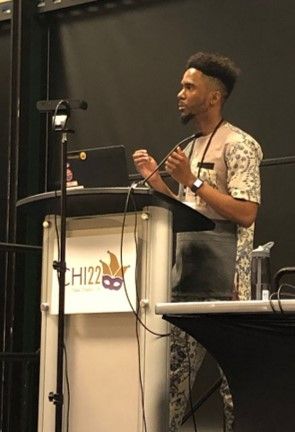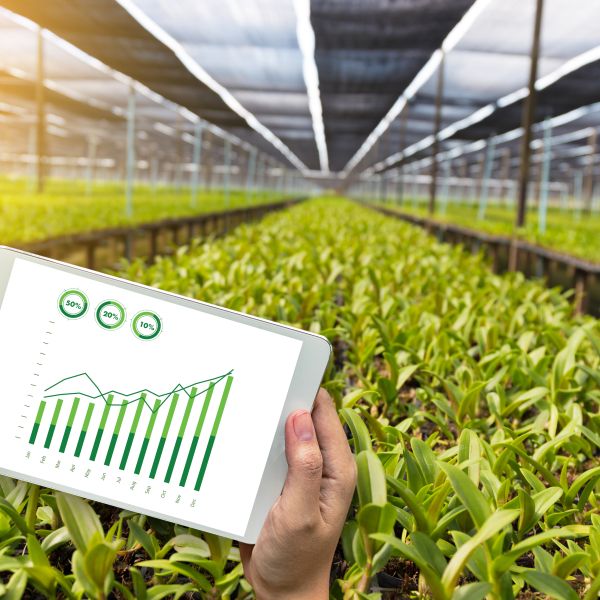By Patricia Waldron
June 21, 2022
When Gloire Rubambiza, a doctoral student in the field of computer science, was installing a digital agriculture system at the Cornell Orchards and greenhouses, he encountered all kinds of problems — connectivity and compatibility issues, equipment frozen under snow, and sensor connections that did not obey the “righty-tighty, lefty-loosey” rule.
Farmers will likely experience these and other obstacles, especially in rural areas with poor infrastructure, despite researchers’ best efforts to create seamless, plug-and-play technology for farms.
To prevent unanticipated issues from being baked in during development, Rubambiza interviewed colleagues to see how the research process may be unintentionally creating problems for the farmers ultimately using the technology. He recommends that researchers enable farmers to tinker with their own systems and involve farmers early in the design process to better translate the technology from the lab to the field.

“Despite good intentions, researchers often are not familiar with the diverse, daily challenges of farming or the specific applications their systems will have. We need to acknowledge that gap, so that we can have the intended impact for this technology on rural farms,” said Rubambiza. He is the first author of the paper “Seamless Visions, Seamful Realities: Anticipating Rural Infrastructural Fragility in Early Design of Digital Agriculture,” which he presented May 2 at the Association for Computing Machinery’s Conference on Human Factors in Computing Systems (CHI).
Empowering farmers to customize their digital agriculture setups will help them avoid becoming reliant on “black box” commercial systems, which may lock them into service contracts with companies that could profit from their data against their wishes.
Digital agriculture typically involves deploying sensors in fields, collecting data, and sending it to the cloud for analysis, then using the results to automate and optimize farm tasks, like irrigation. Small rural farms will likely face many challenges in installing these systems due to gaps in rural infrastructure, such as frequent weather-related power outages and poor internet coverage.
“Historically, people in rural areas have had to create their own infrastructure due to urban-centered technology design and standards,” Rubambiza said.
For his own work, Rubambiza kept logs of the challenges he encountered as he installed a central server and sensors at the Cornell Orchards and in Plant Science greenhouses. He also interviewed six other researchers using the same research technology. “I figured, I can’t be the only one who is going through this,” he said.
In talking with colleagues, Rubambiza found that in contrast to the seamless technology that researchers have envisioned, invisible barriers make it difficult to anticipate issues farmers will face. His colleagues also encountered multiple snags, but working at a university gave them time, funding, and institutional support to solve these problems, which most farmers lack.
Rubambiza and his co-authors recommend that researchers and engineers working in digital agriculture develop systems that support the farmers’ right to tinker. This will allow farmers to adapt the system to the specifics of their own farm and will make the system more resilient to local gaps in rural infrastructure.
They also suggest that researchers provide farmers with a “cheat sheet” of the problems they encountered during development. This type of troubleshooting is typically left out of scientific publications and presentations, but documenting these hurdles could help farmers deploy and manage their systems.
Additionally, Rubambiza recommends that researchers can better translate research from the lab to the field by involving farmers earlier in the design process. This could occur by including farmers in co-design workshops, recruiting rural youth as research assistants, and working with extension agents to give feedback on how these systems will function on real farms.
Some journalists and policy makers have framed digital agriculture as a revolution akin to mechanized farm equipment, or the use of commercial fertilizers and pesticides. Rubambiza hopes that being mindful of unanticipated issues during the design process will allow these systems to be deployed more equitably — so this revolution can have the positive impacts researchers envision.
Co-authors on the study include Phoebe Sengers, professor of Information Science and Science & Technology Studies, and Hakim Weatherspoon, professor of Computer Science, both in the Cornell Ann S. Bowers College of Computing and Information Science.
Funding for the project comes from the U.S. National Science Foundation, the Cornell Institute for Digital Agriculture (CIDA), and Microsoft fellowships.
Patricia Waldron is a science writer for the Cornell Ann S. Bowers College of Computing and Information Science.



